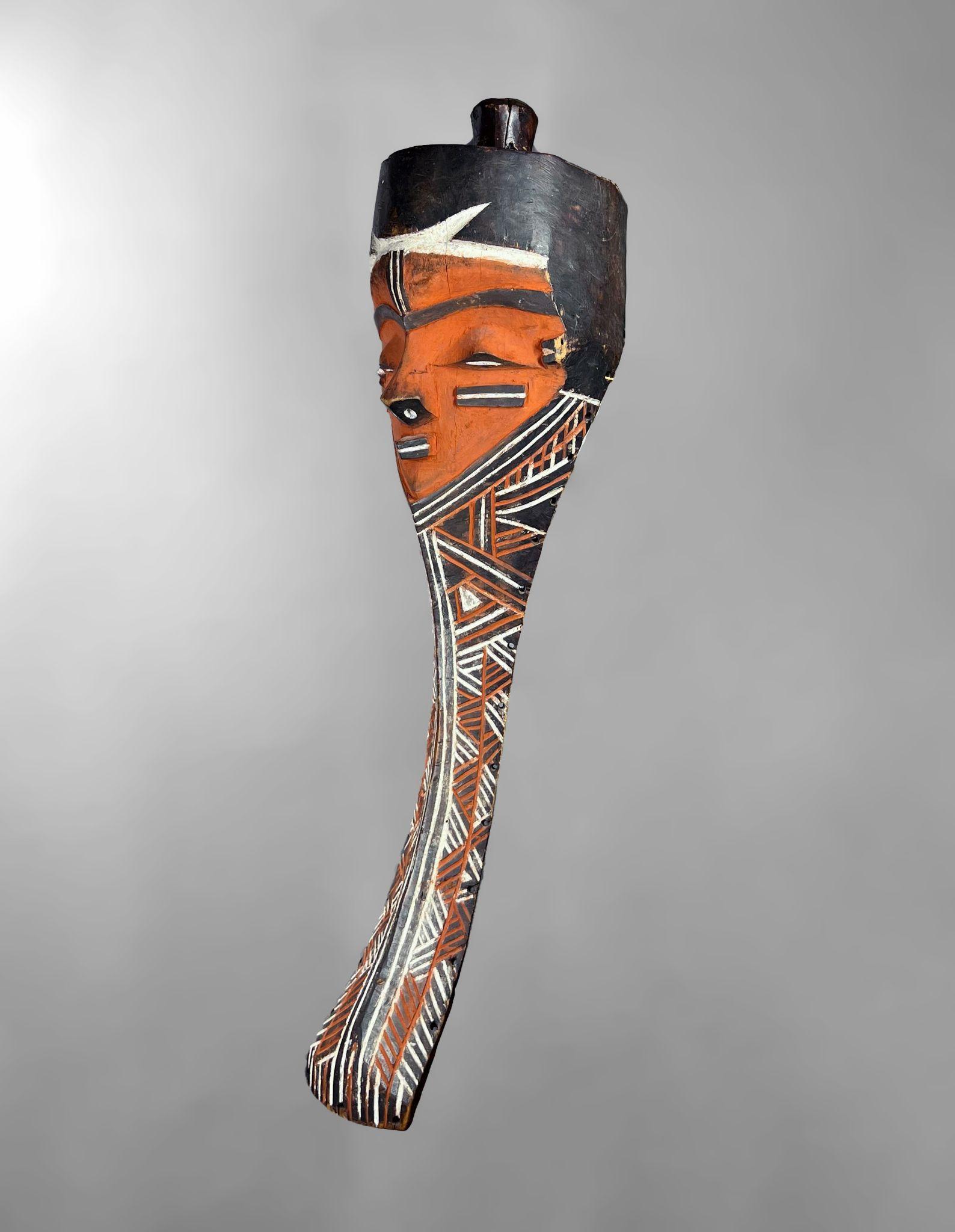CooperEvans-FineArt Collection Summer2023





An old Irish collection
This extraordinary and old mask is an exceptional work of Nigerian art. The face is serene, with resting eyes and the mouth slightly agape, revealing a row of teeth framed by black lips. A vertical scar divides the forehead of the mask, and two scarifications flank the eyes. Interestingly, one of these scarifications has three segments while the other has two. The coiffure is comprised of a checkerboard pattern topped by an elaborate, floral-like design consisting of a central fin of radiating waves, joined by two arches on the left and right. The sides of the mask are decorated with small hand mirrors, likely advertising mirrors which would have been common in the early 20th century.
Kaolin pigments have been used to give the surface a glowing white color to match the skin of a spirit, and through many paintings the mask has accrued a profound surface.
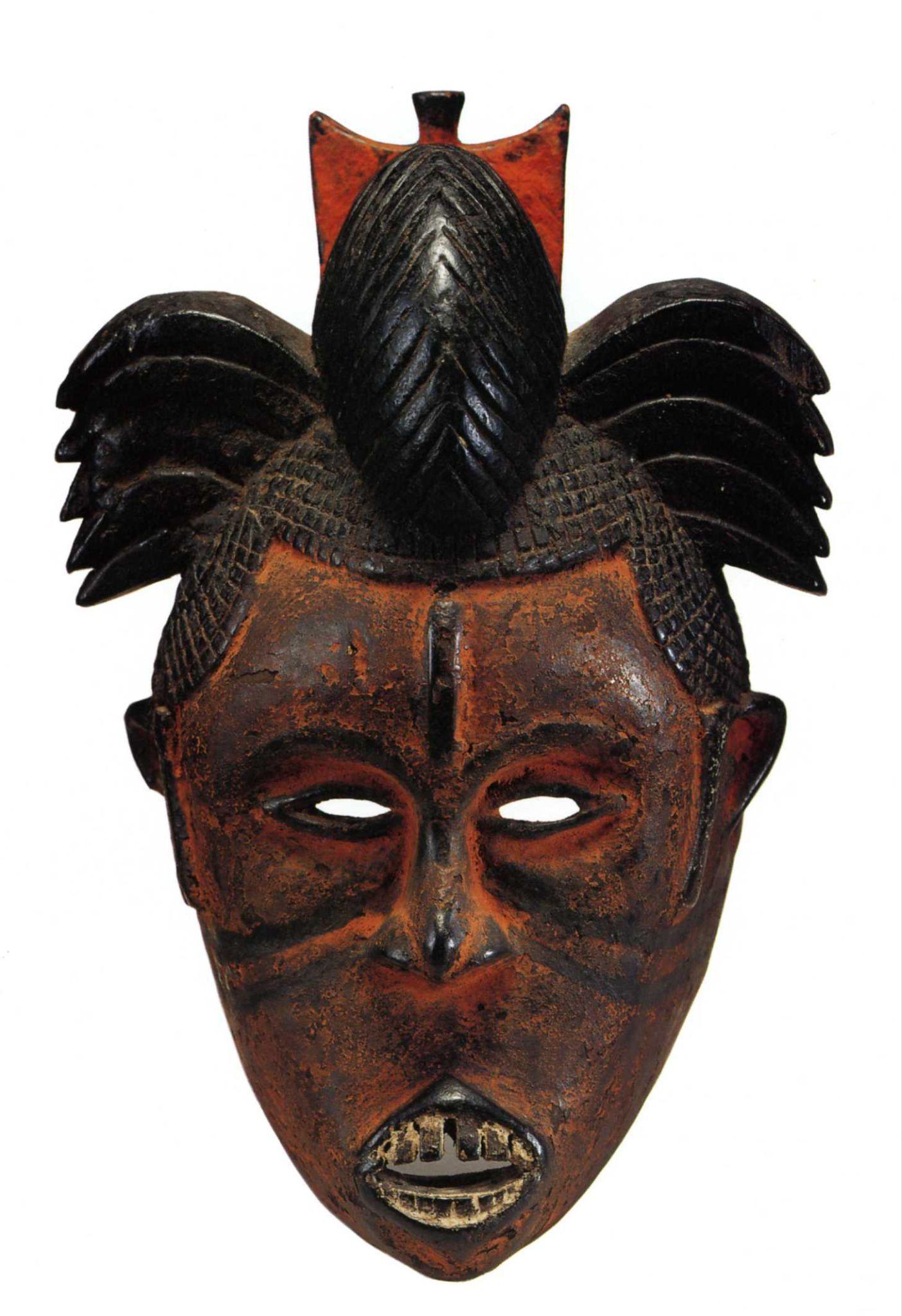
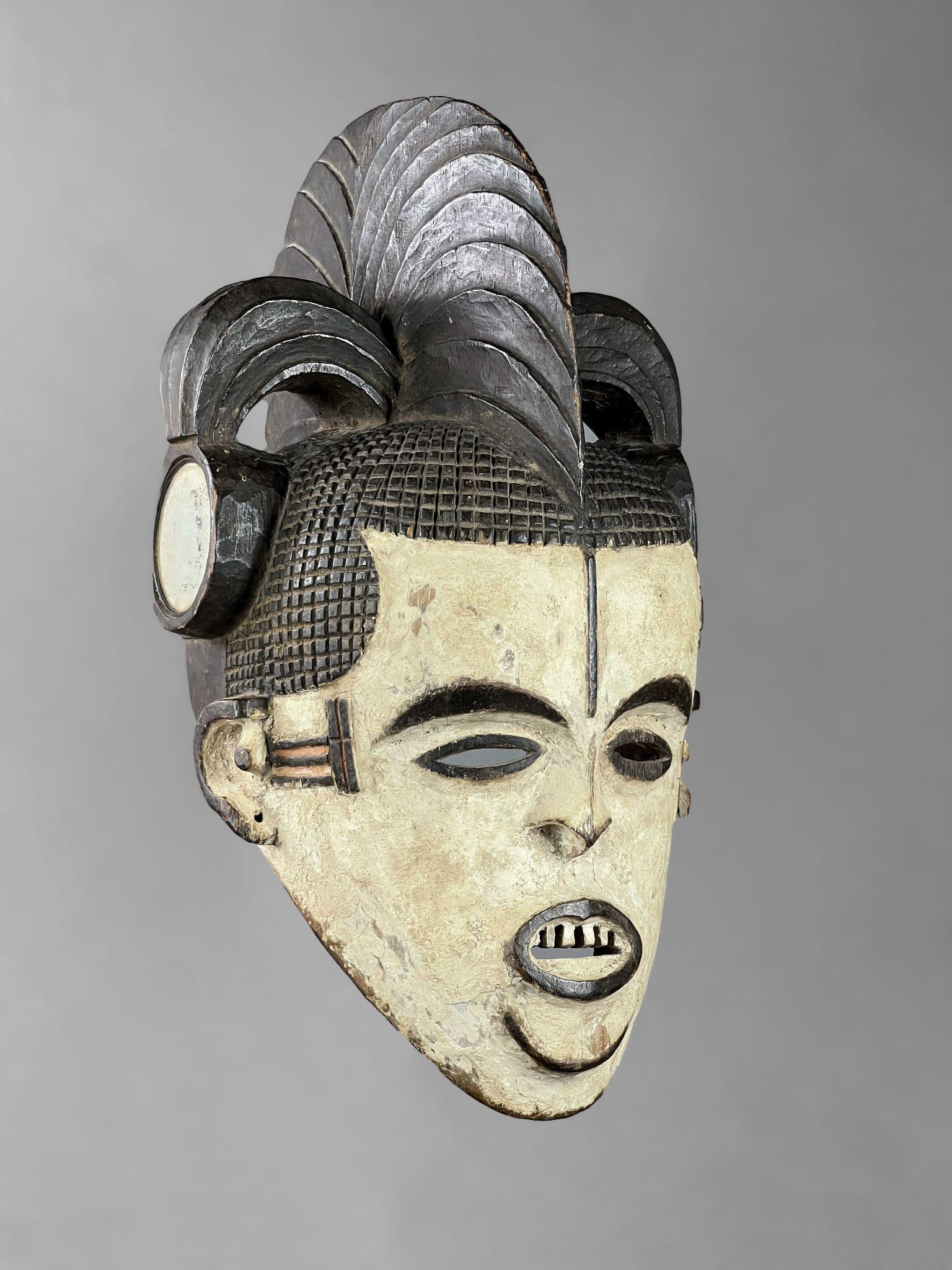

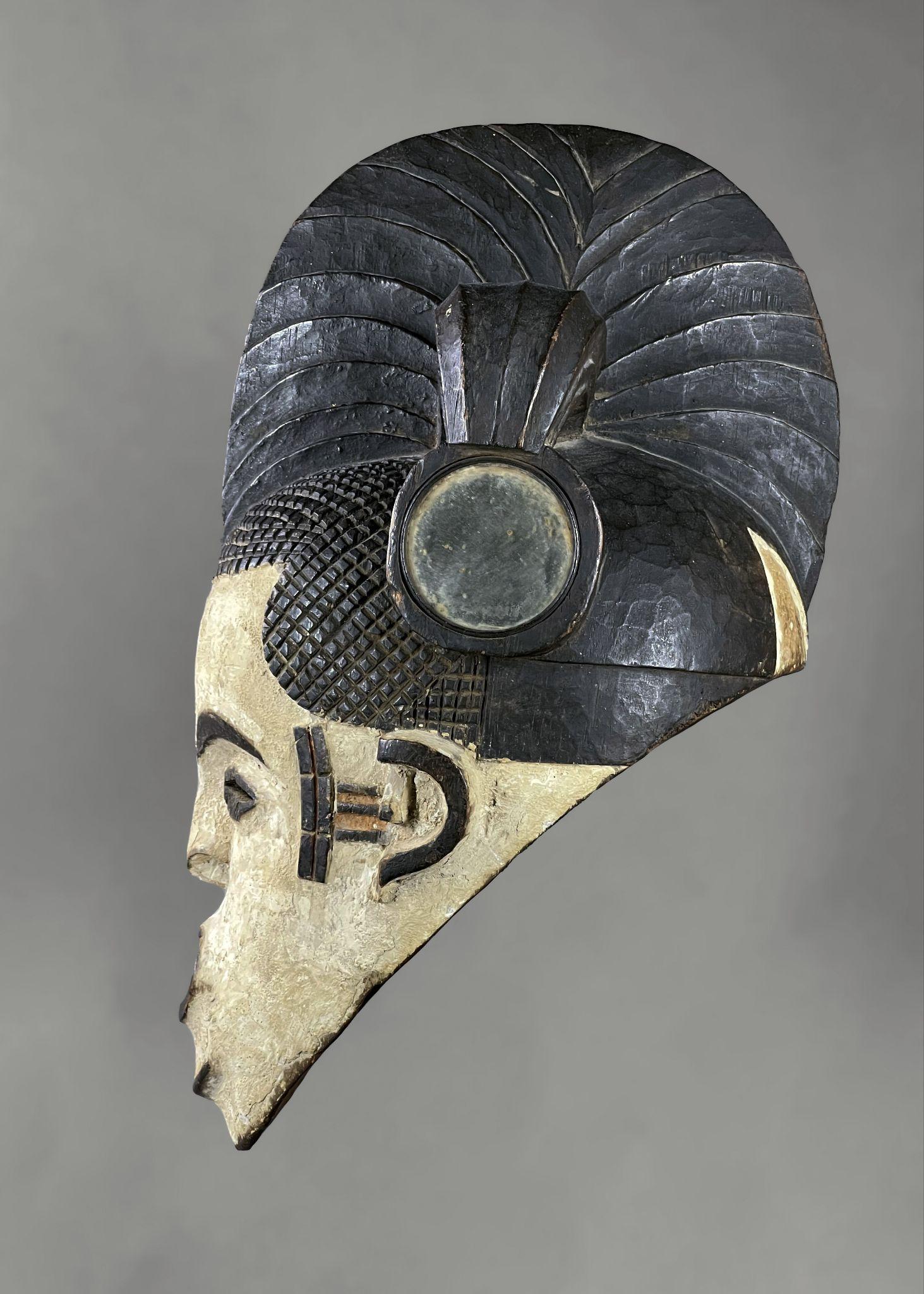

Existing between the 3rd and 11th centuries AD, the Bura system is most notable for the numerous terracotta artworks recovered in the lower Niger River valley. Consisting of urns, grave markers and fragmented figures depicted in numerous abstracted and anthropomorphized forms. The example here is a relatively small fragment, likely from a larger figural grave marker or urn. The upturned face conveys an austere and content expression, rendered in a level of modernism reminiscent of Brancusi busts. The backside features an elaborately incised coiffure as well as scarification on the nape.


Provenance:
Milton Leof, Mexico City
Sotheby’s 19 May 2000
Taylor Dale, Santa Fe
Baule figurative art is arguably among the most classical of all African sculpture, first being introduced to Europe in the 1910’s and 20’s by the trailblazing dealers Paul Guillaume and Charles Ratton, quickly becoming staples in private and public collections around the world. Standing figures of this type are carved for divination rituals, where a diviner would coax the spirit into helping resolve various conflicts. This figure is exceptional to me for the triple beard and hand raised to the middle braid, suspended in reflection. The right hand would have once held something, but this portion has long been lost. The introspective expression featuring piercing white eyes are framed by radiating brows and high-relief keloid scars. It’s torso is separated into well-defined forms, flowing naturally into muscular legs and ornate base.
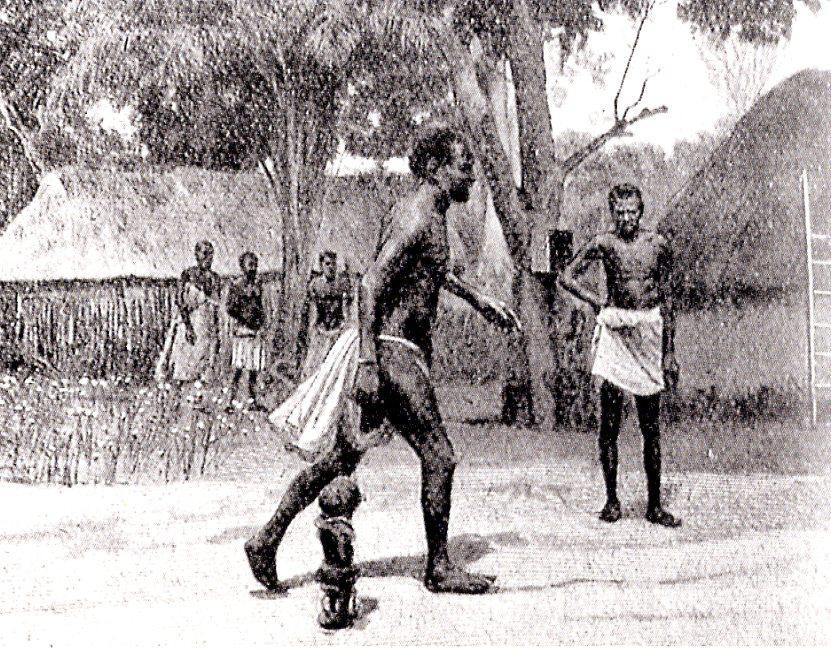


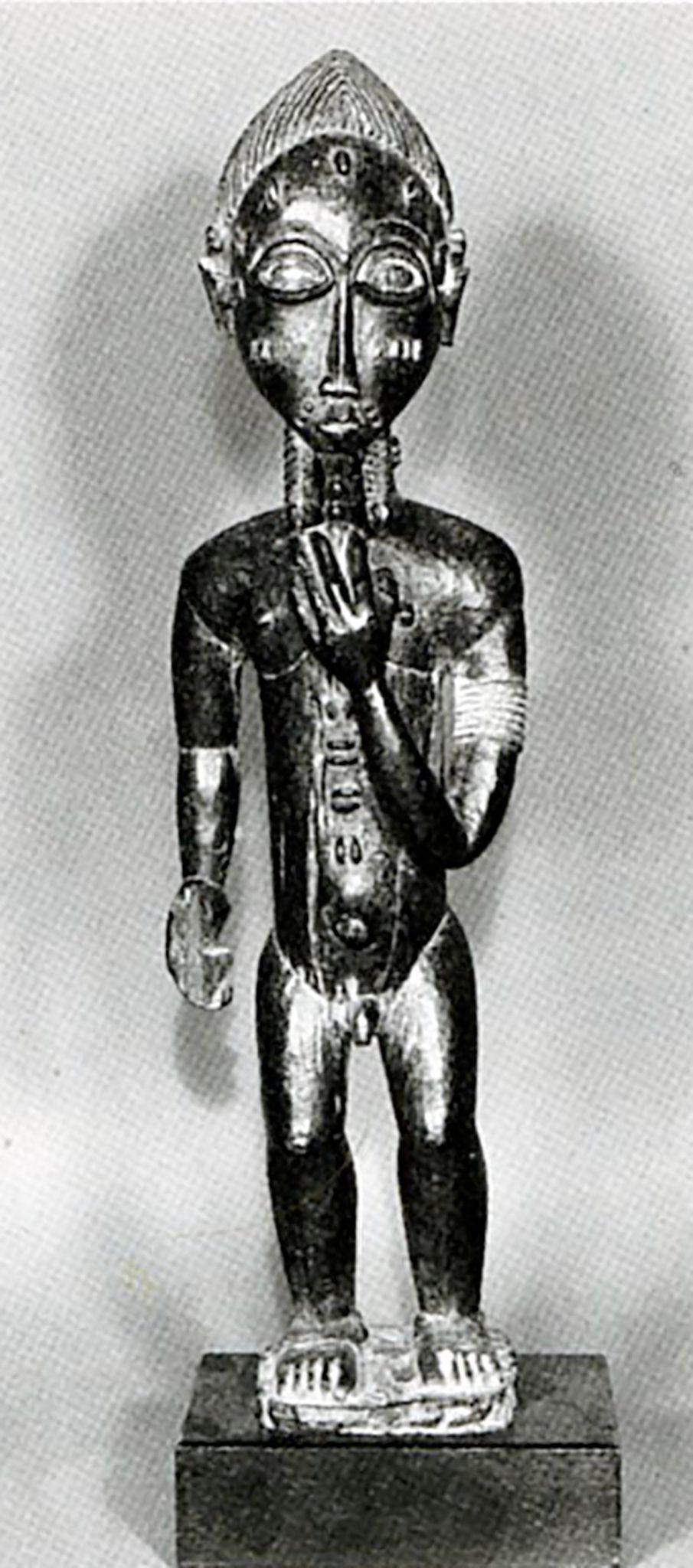
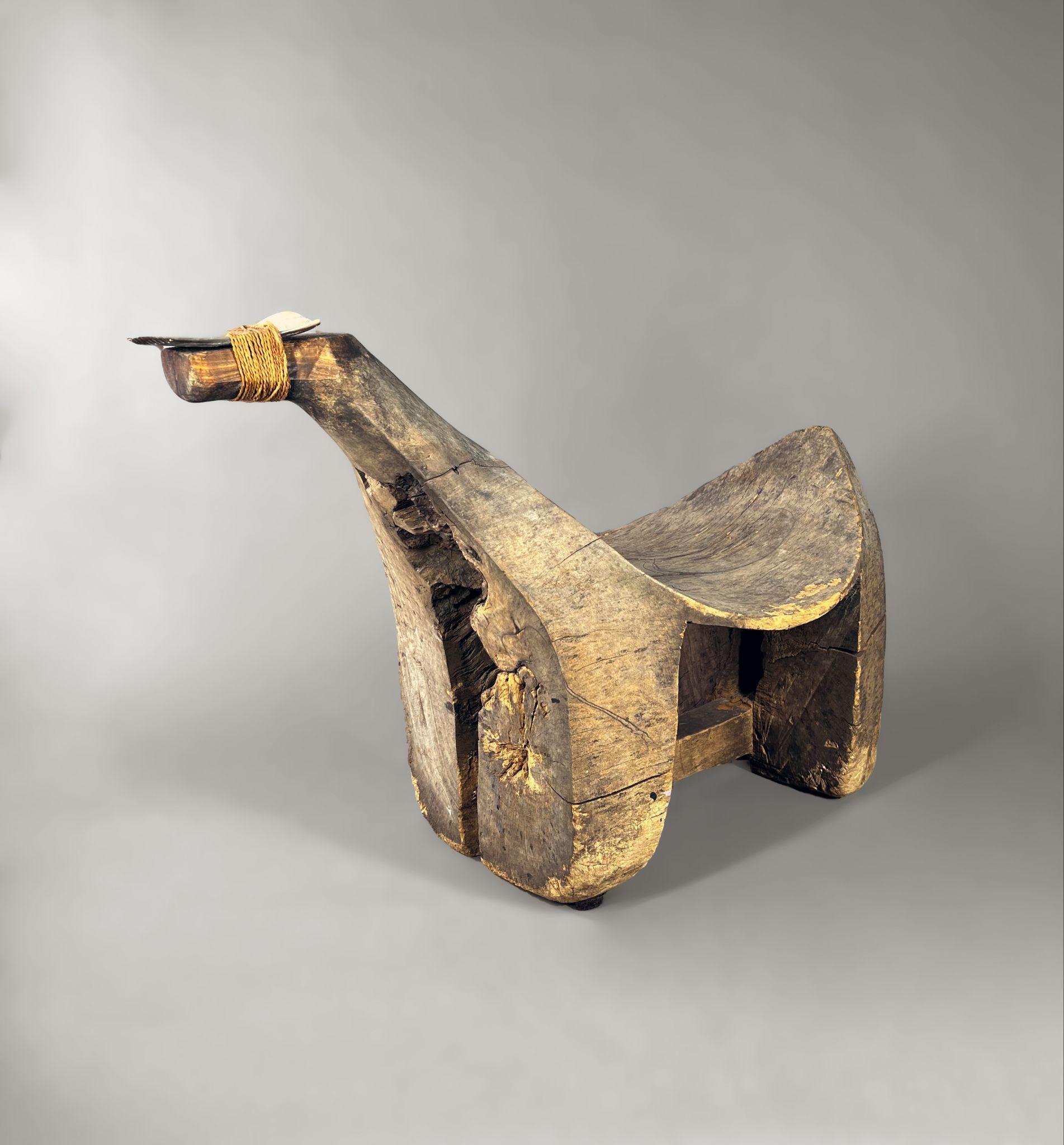
Nukuoro art: elusive, powerful, and exceptionally unique. The simple and strong forms carved in hardwood and accentuated by their patina and use bring me great joy, and this stool falls perfectly into that category. The sharp, geometric forms meld together into an abstracted animal with four legs and a slender neck which crescendo into the ‘head’ of the stool, where coconut husks would be grated. This stool has a very well-developed patina and beautiful natural erosion due to decades of use, storage, and usage again.
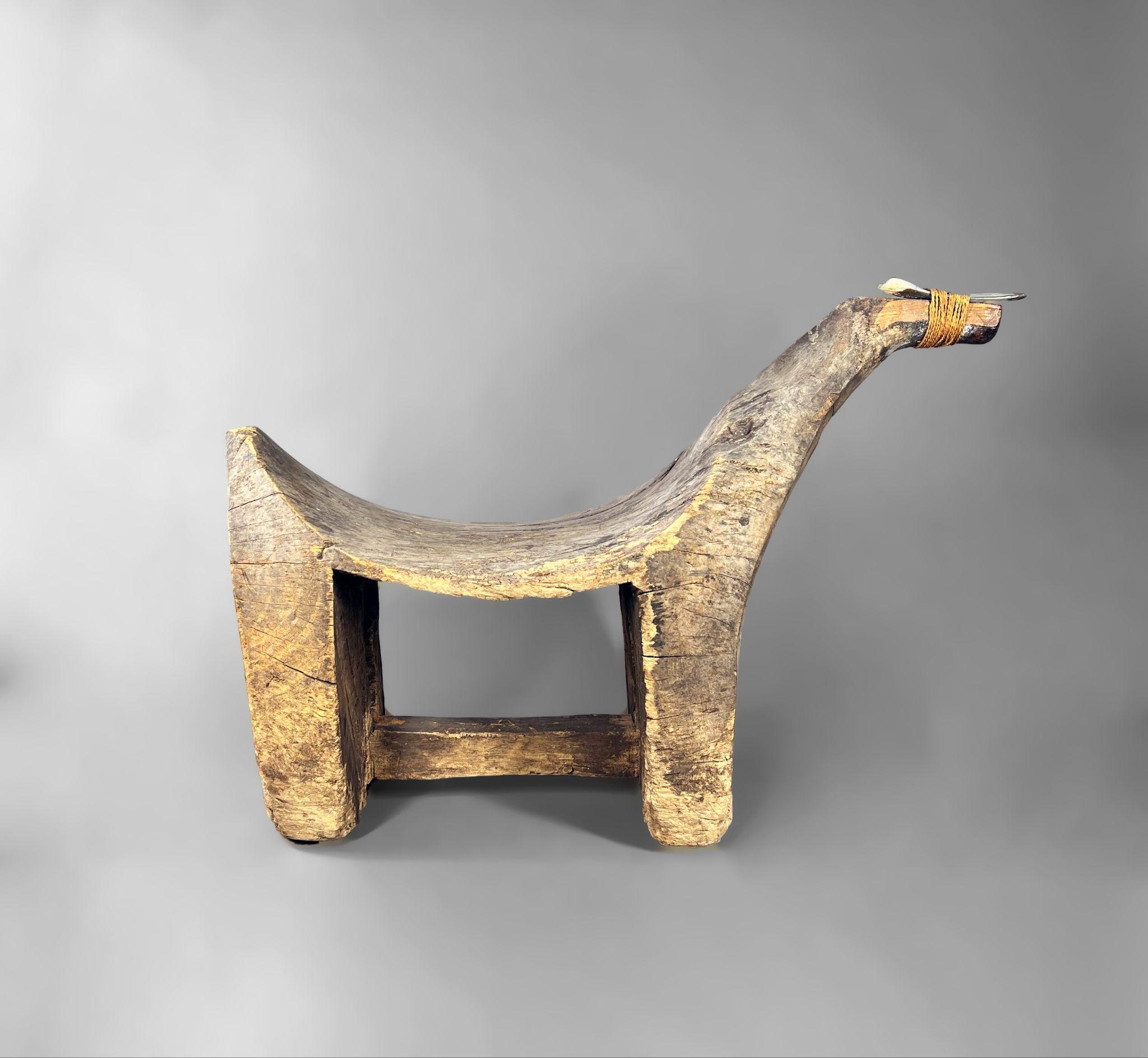
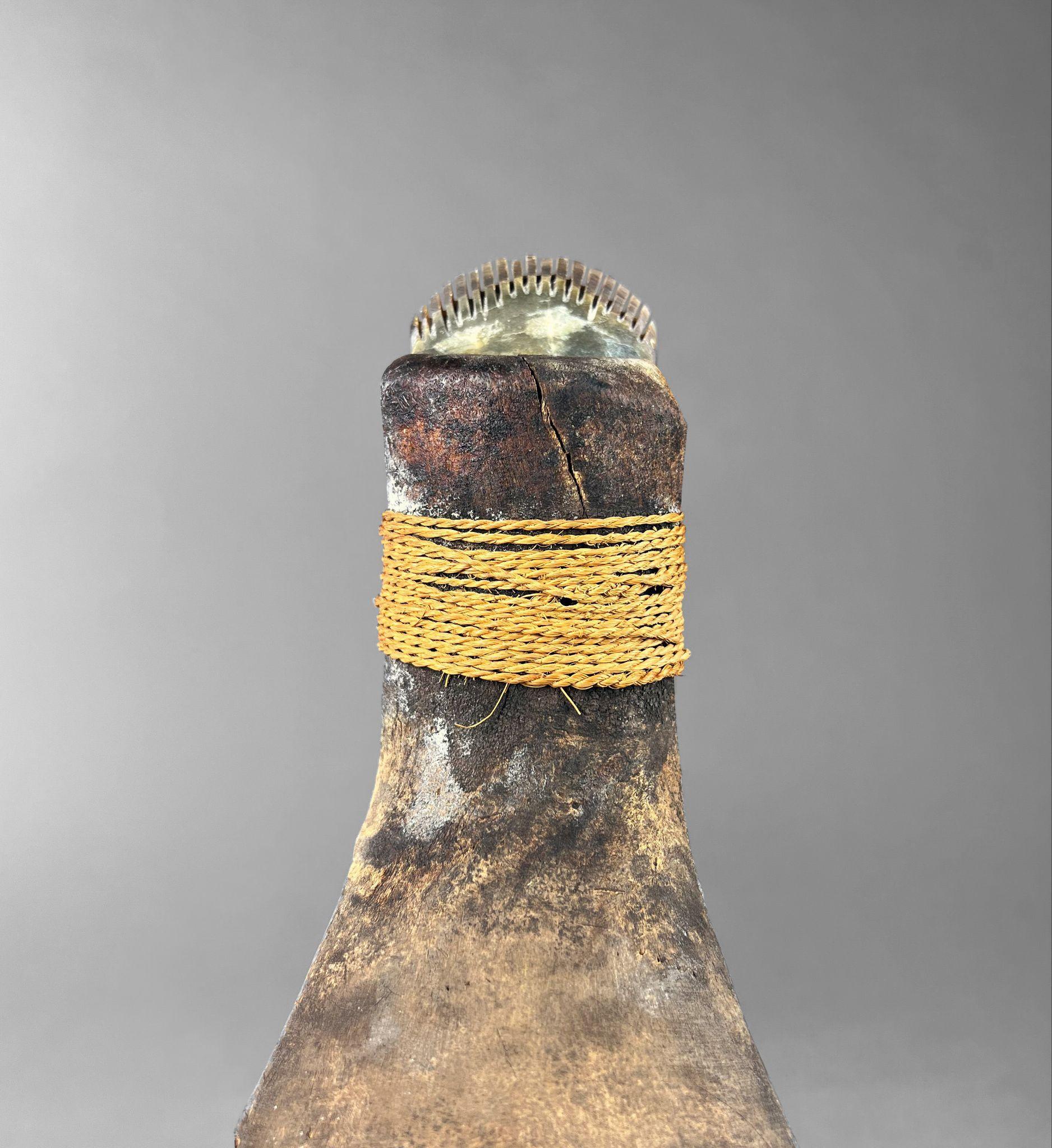
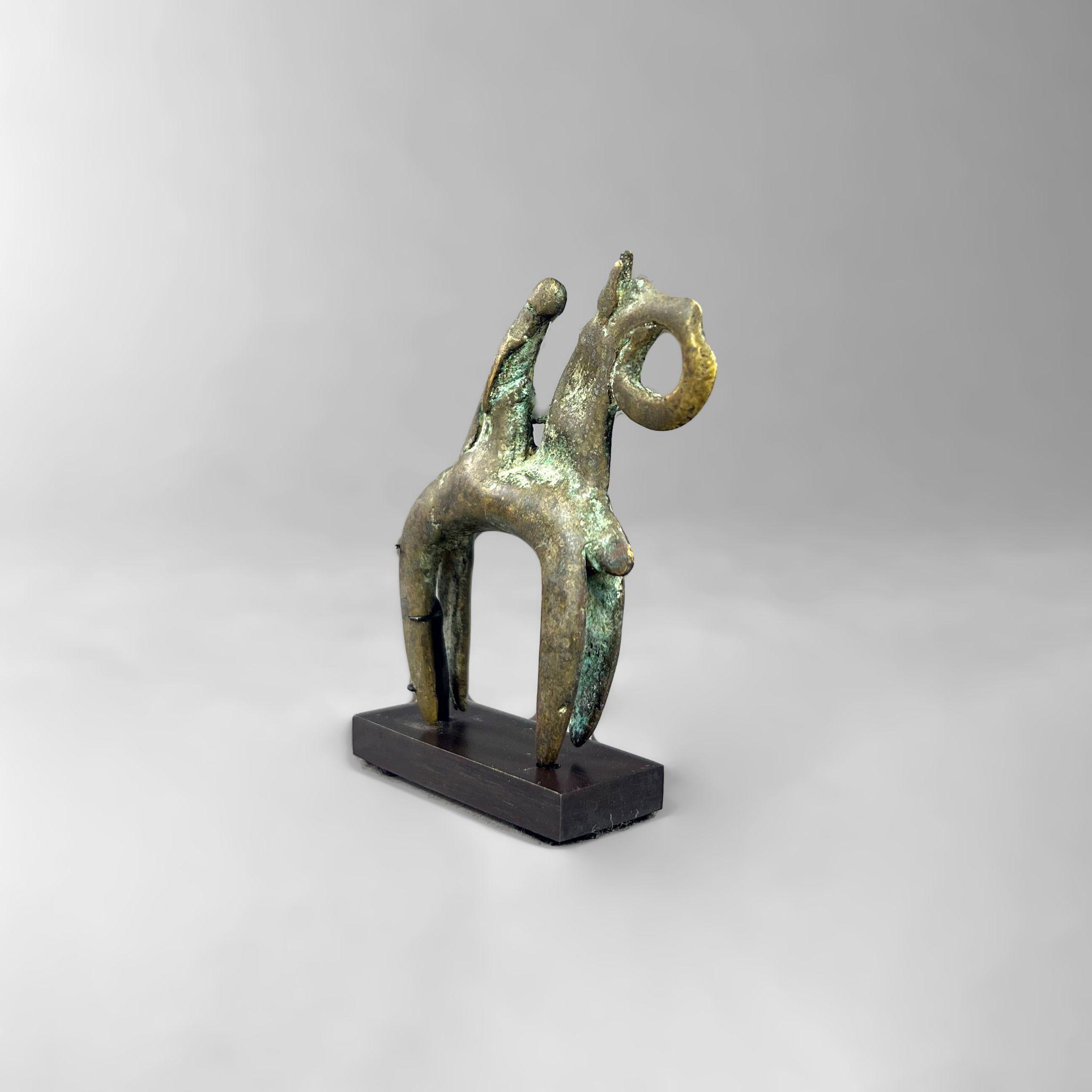
Charms and talismans depicting equestrian motifs are my favorite of all African metalworks. The cavalier charms of the Kotoko being my particular love due to the variety and level of artistry that they exhibit. The charm here shows a warrior on horseback, one hand holding the reigns and the other on his belt ready to draw his weapon. The long legs of the horse support the slender body, worn down smooth and pigmented with green erosion
The horse had it’s head held high, the robust neck supporting an abstracted head featuring a loop which would have held the figure on a necklace or chord.
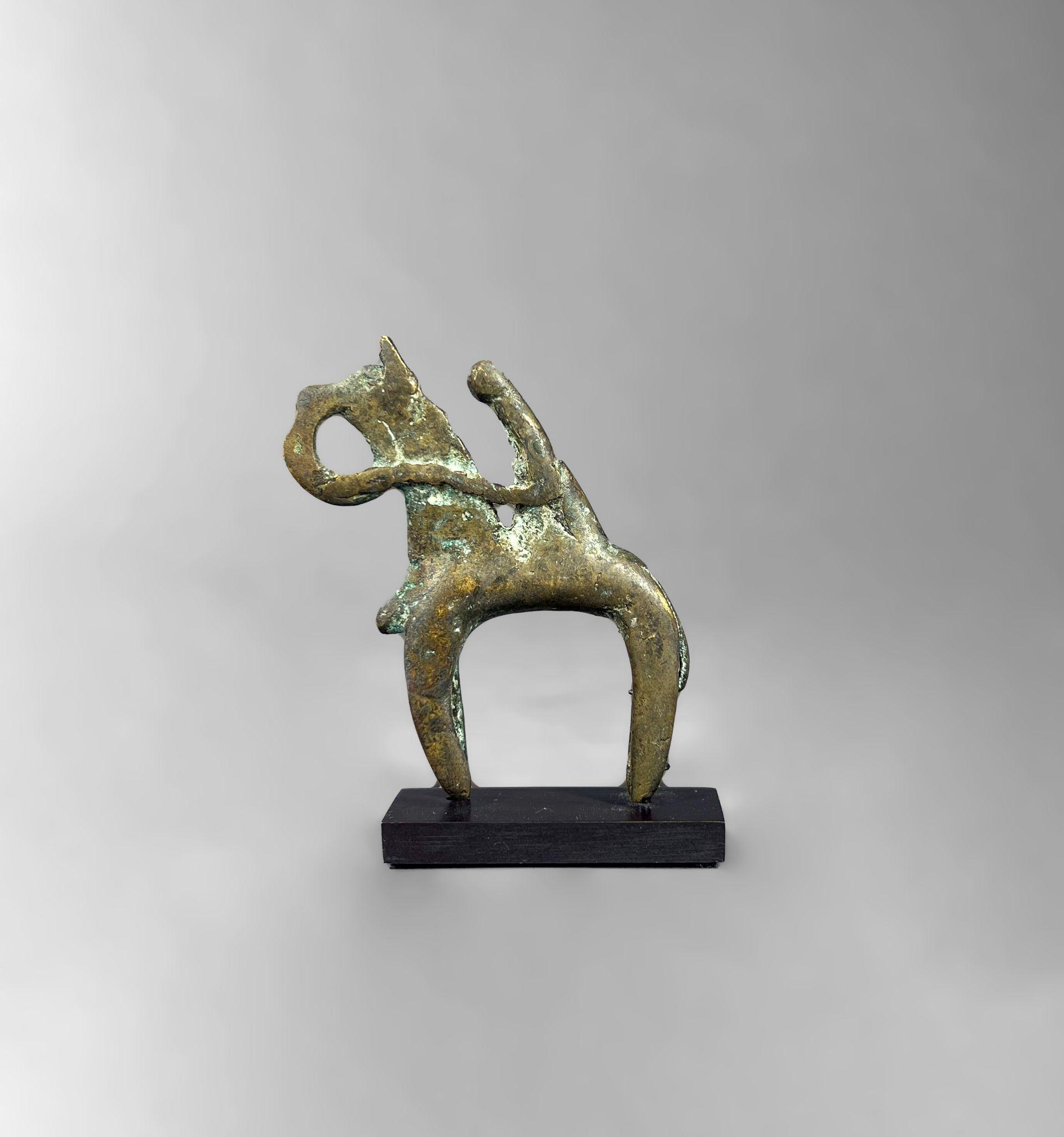

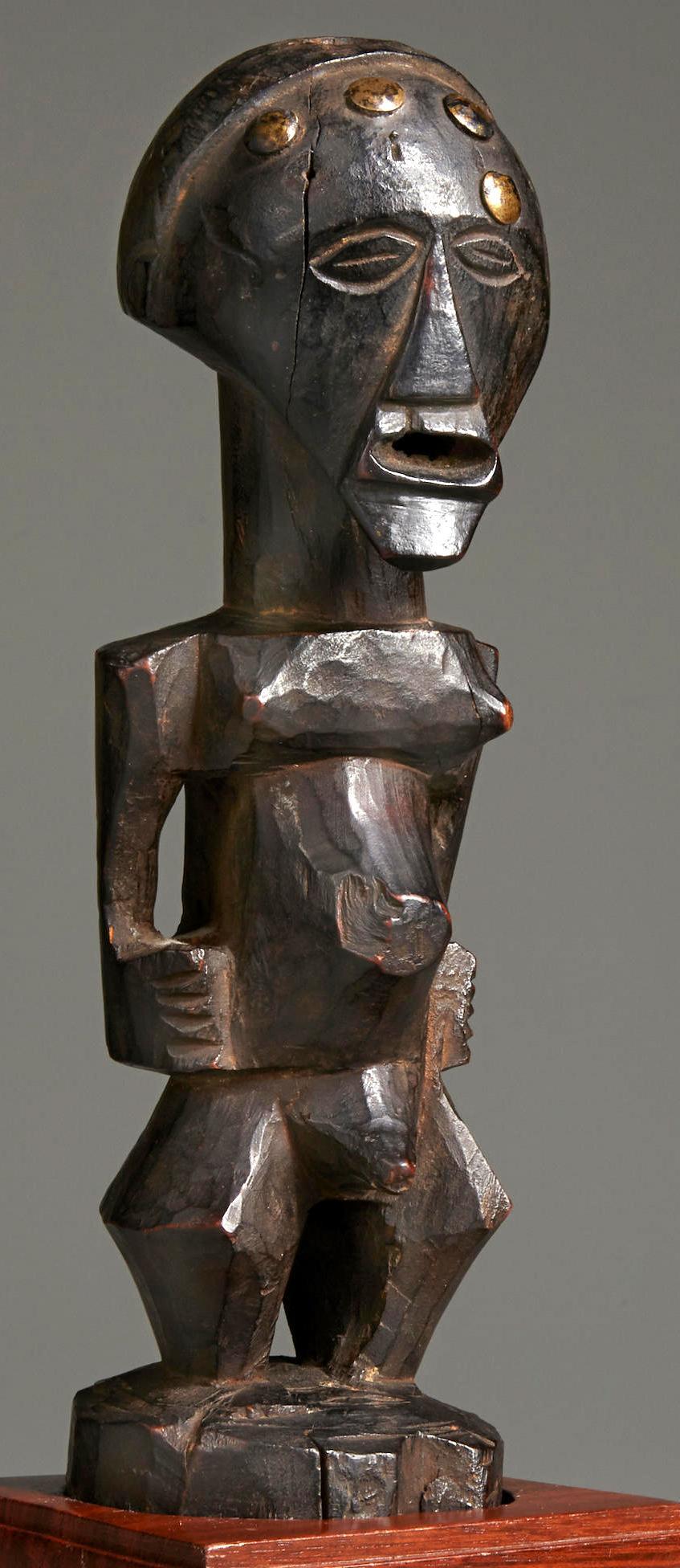
Songye sculpture is often most notable for the high degree of cubism, evident in this fine and old fetish figure. The chunky, geometric forms harmonize to create a powerful and present male figure, classic yet so solitary and full of character. The face is stoic yet pleasant, having the lips pierced to show the teeth. Four metal tacks adorn the figure, and there is a large hole in the top of the head into which medicinal substance was deposited. The glistening surface is created by decades of ritual use, sweating palm oil on almost every inch of the body. The gradient patina is due to the amalgamation of libations, with the light area on the legs being where a skirt was once tied.
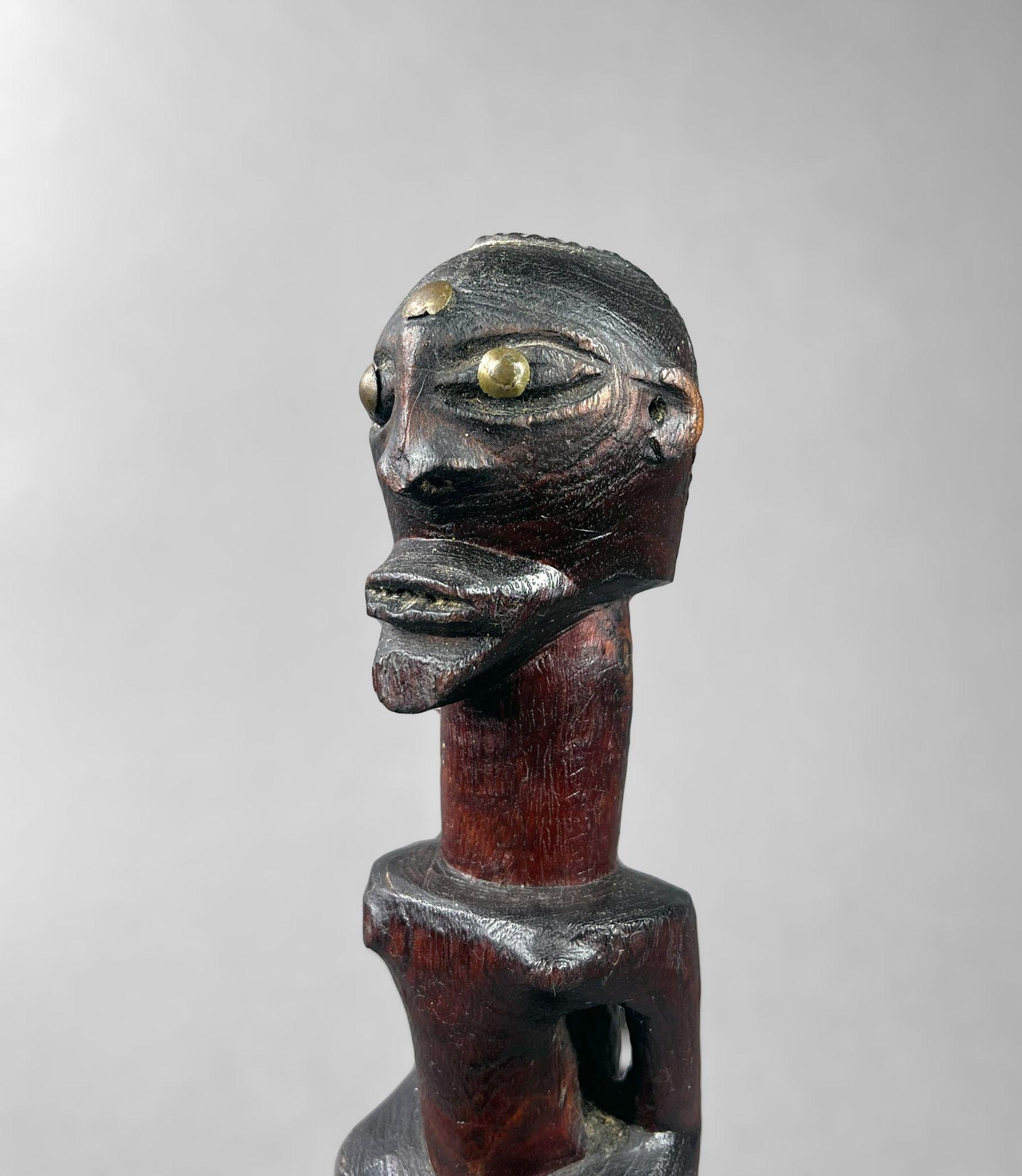
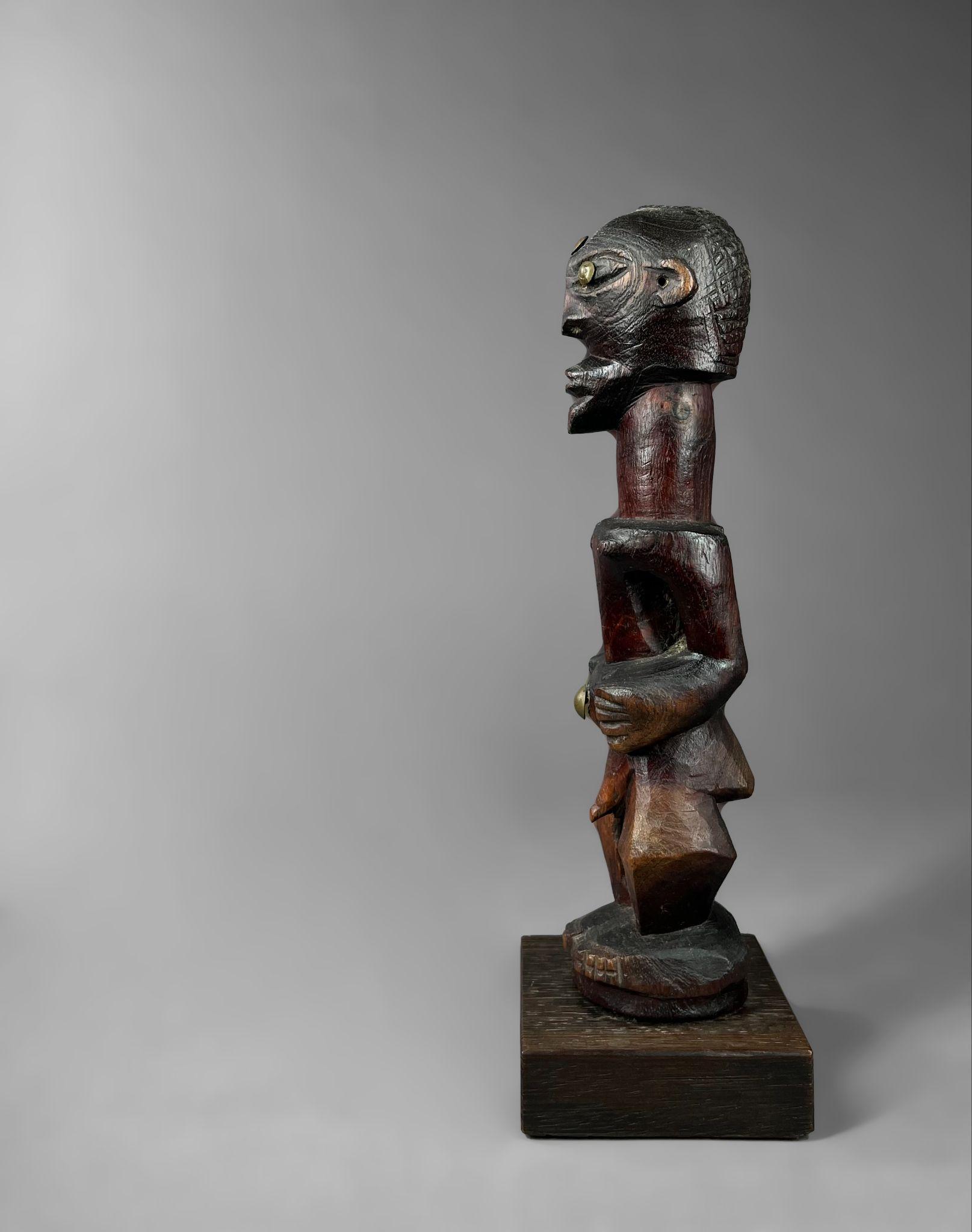
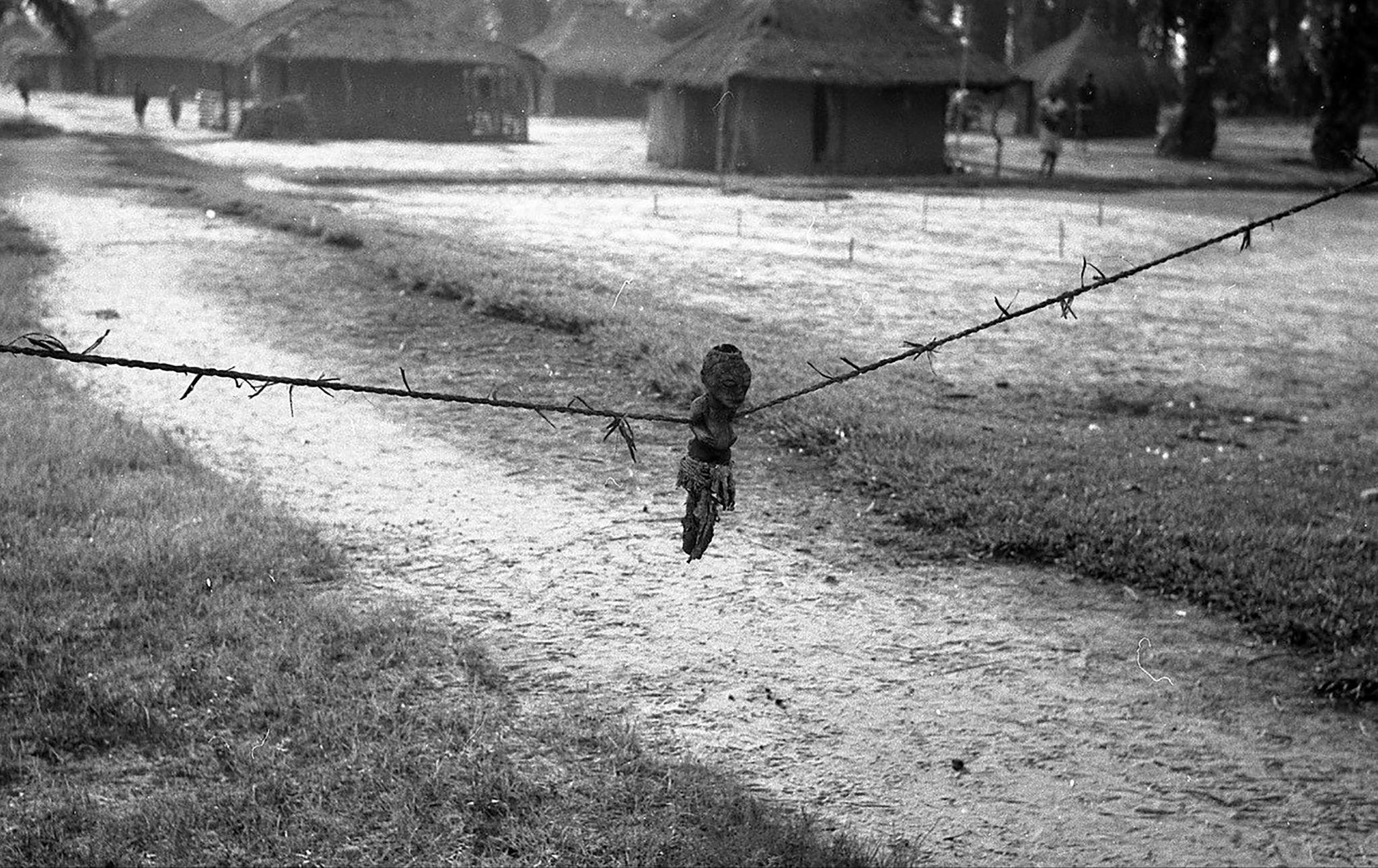
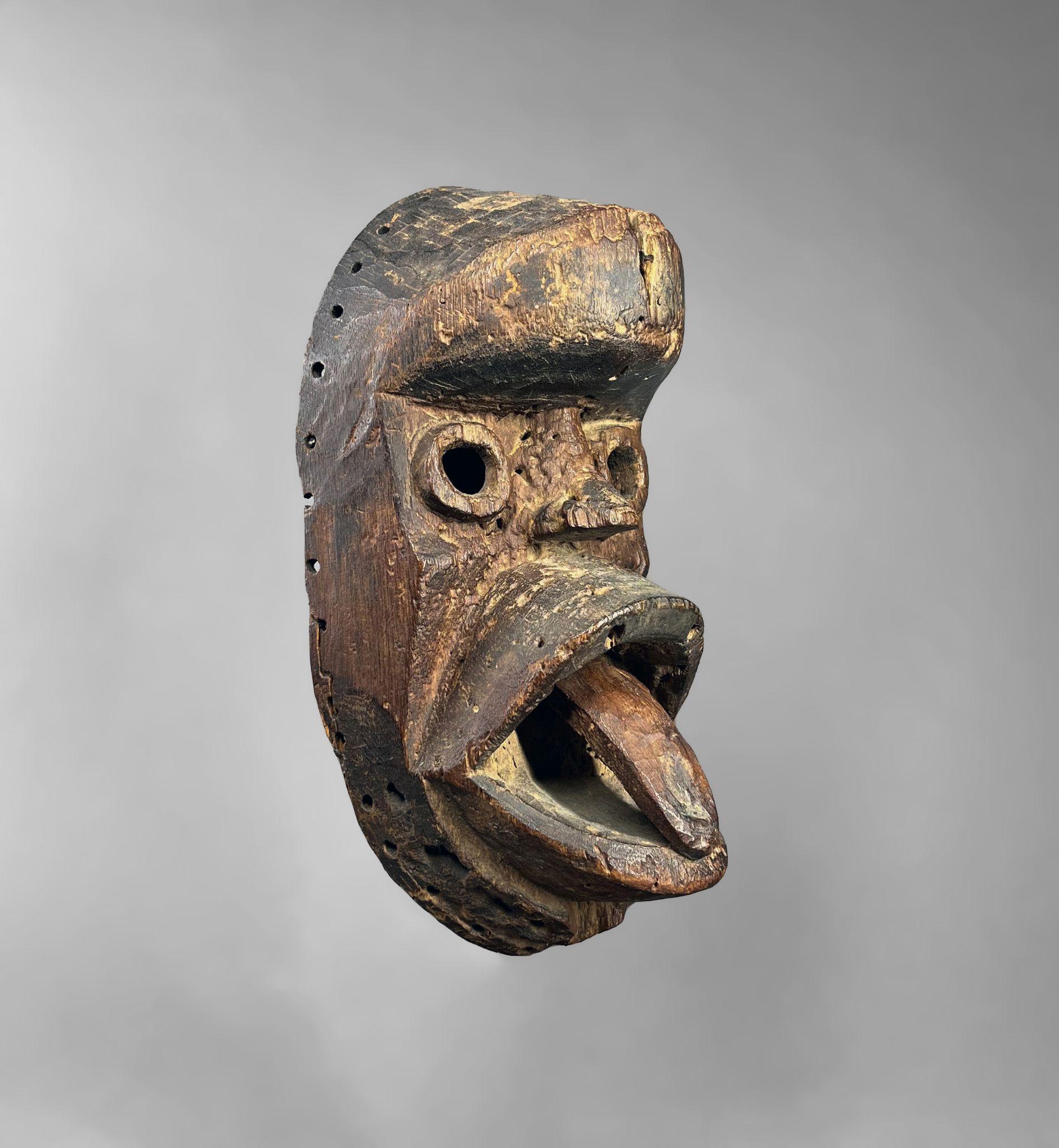
Provenance:
Mark Eglinton, New York
Edward Albee, Montauk
Fily Keita, Los Angeles
Dave Dahl, Portland
Dan masks often fall into one of two categories: Beauty or the Beast. This large and powerful mask is the epitome of the latter. The extremely dramatic expression with larger-than-life lips revealing a protruding tongue has an unparalleled visual impact. The sculptural quality is only accentuated by the lustrous oxidation of the wood and erosion from application of ritual substances.
The same mask photographed in Brussels, 2003
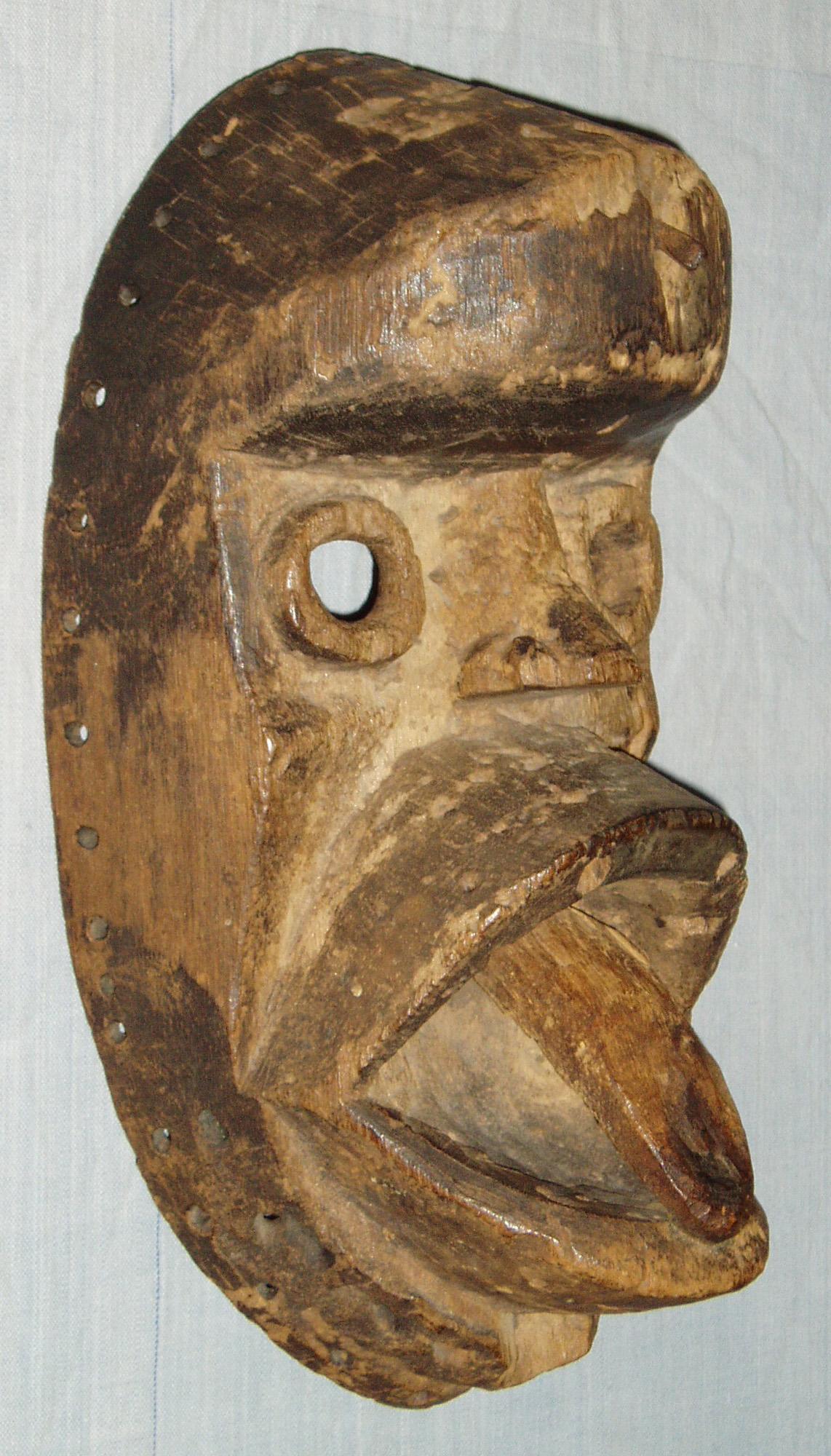
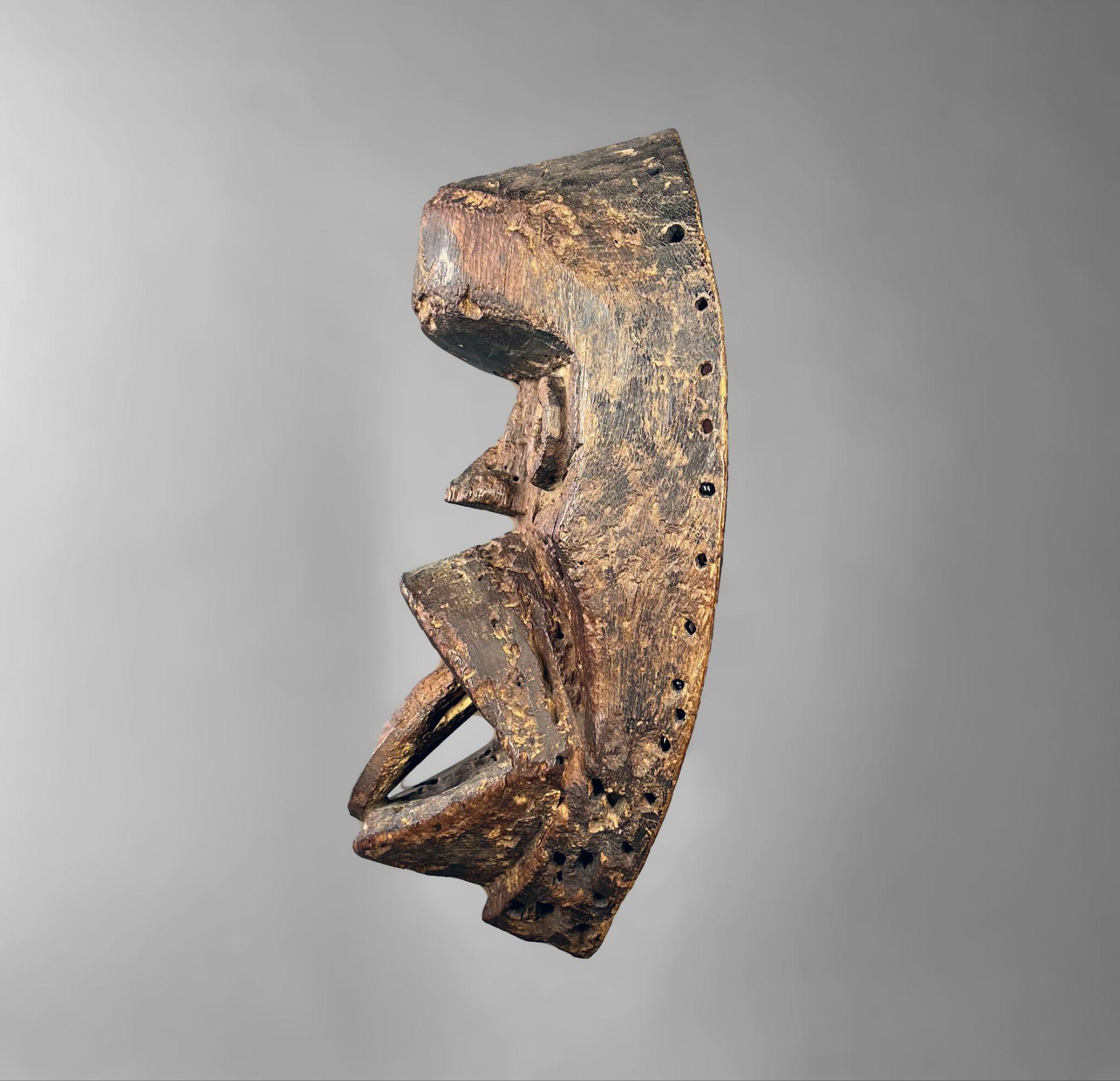
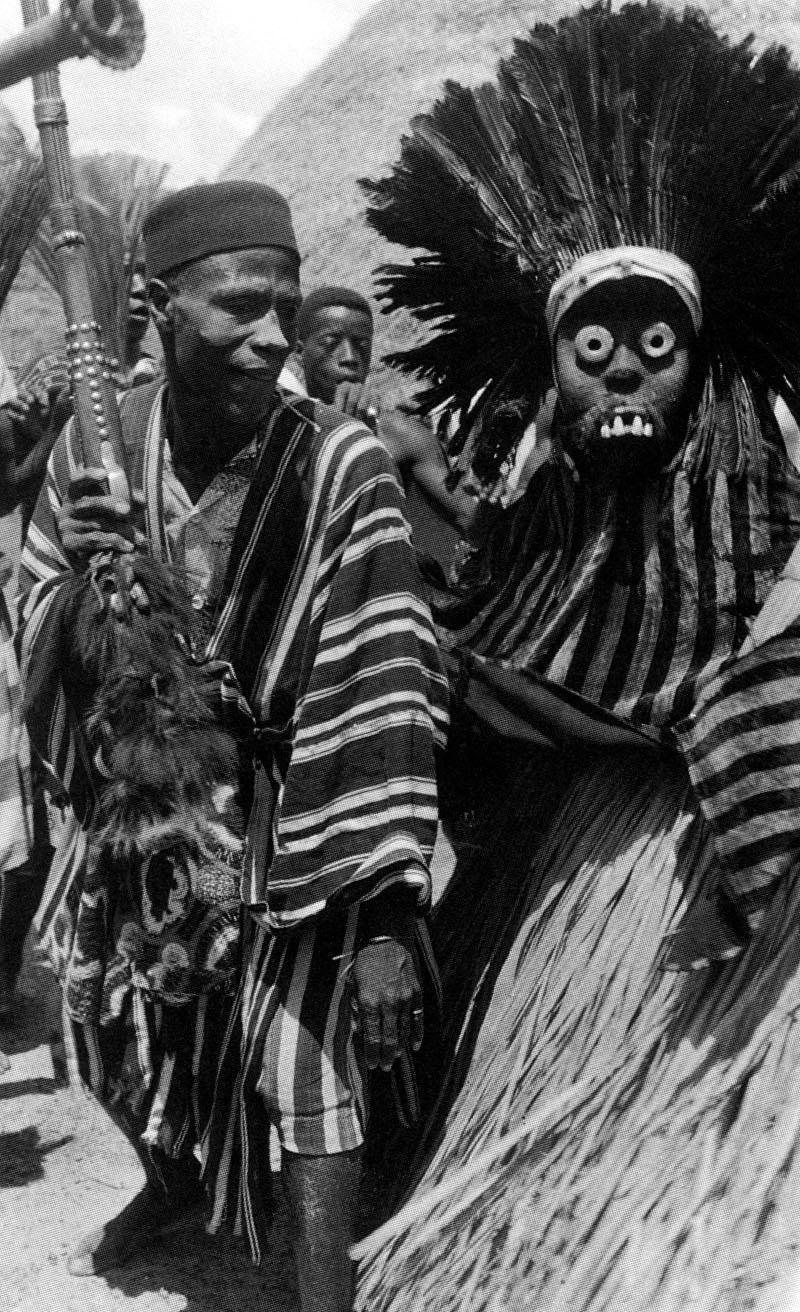

In all societies, harvest of crops is essential and often celebrated. In Senufo society, this celebration takes the form of Tefalipitya staffs. These were awarded to the man who cultivates the most crop, said to represent the wife he will win over by being such a successful farmer. Once given to the champion cultivator, the staff would be stuck into the ground and venerated with offerings of palm oil. After the owner died it was placed outside of his house to guard and guide his spirit.
This example represents the idealized Senufo woman in her prime, seated atop a stool and balancing a pot on her head that likely acted as a libation receptacle. The body has very naturalistic proportions, flowing lines, and a beautiful surface that leaks oil, resulting from decades of ritual use.
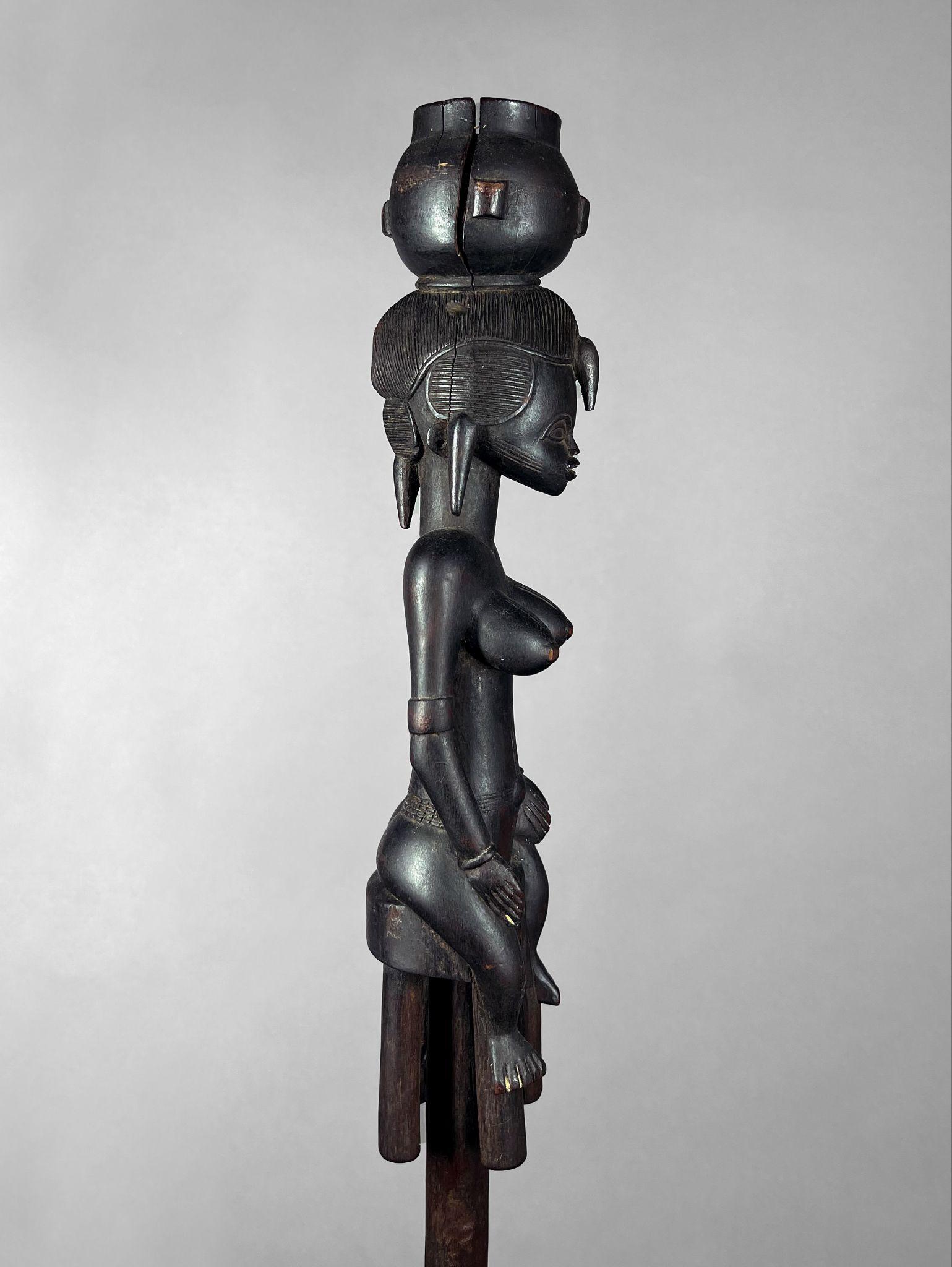
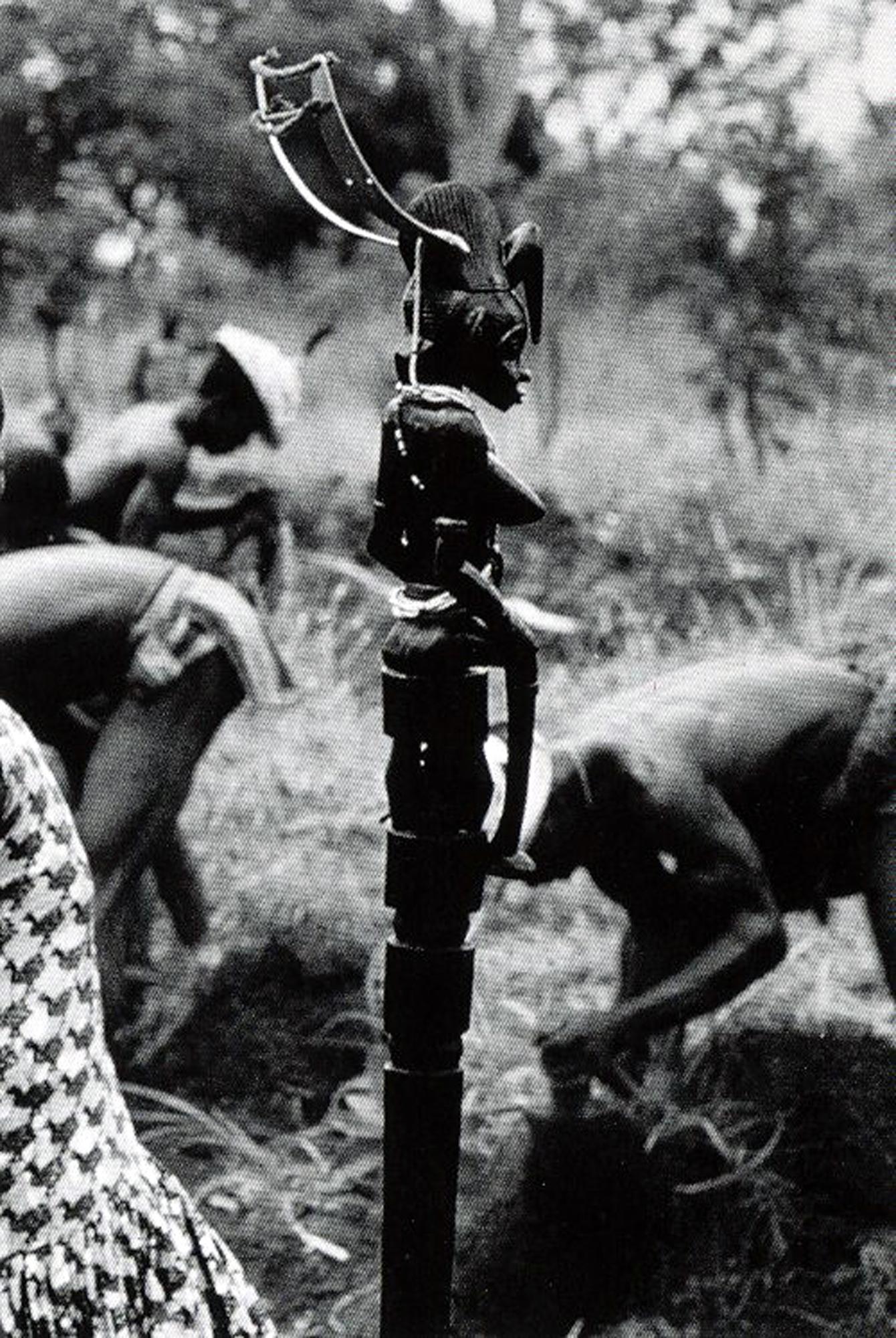
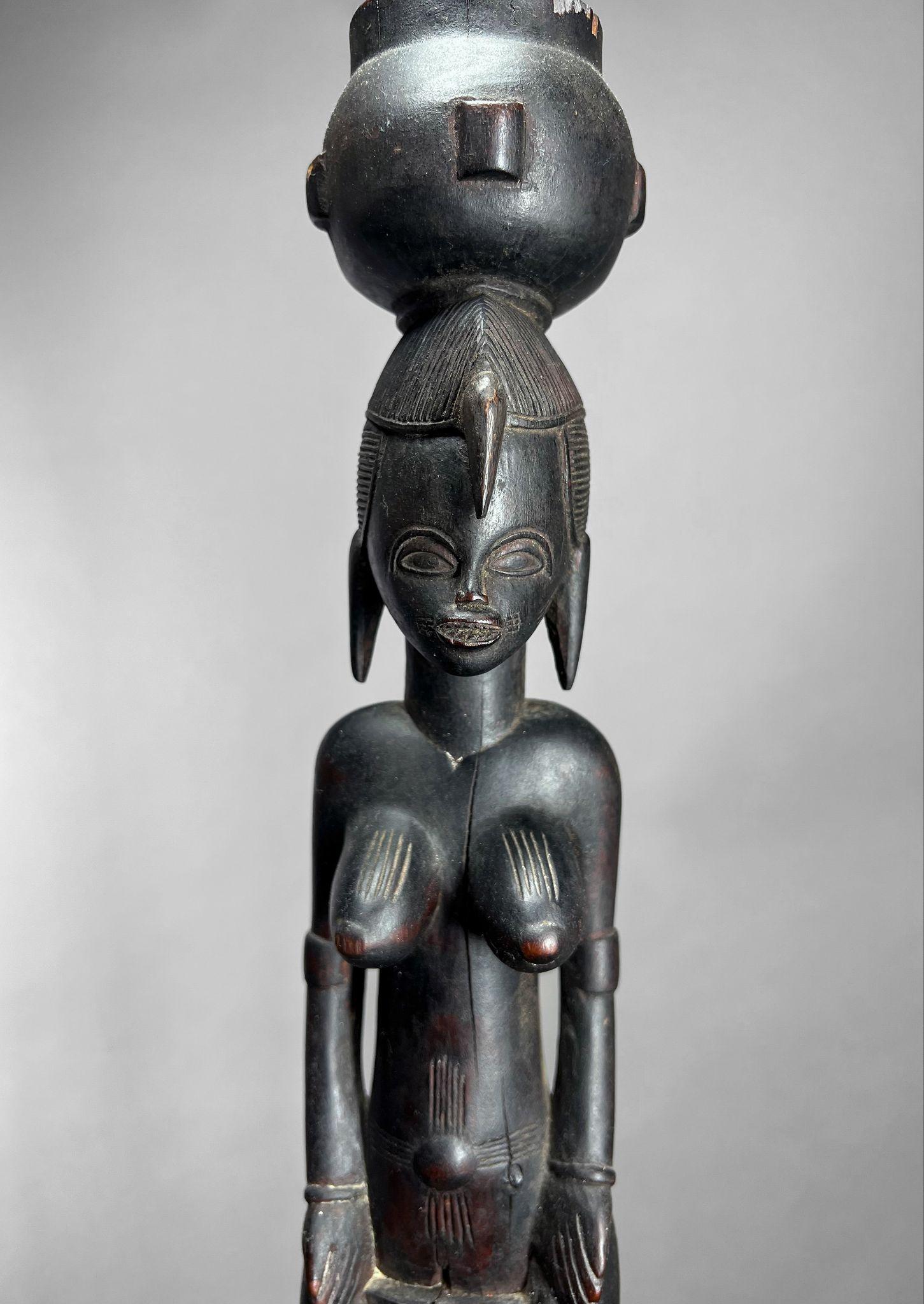
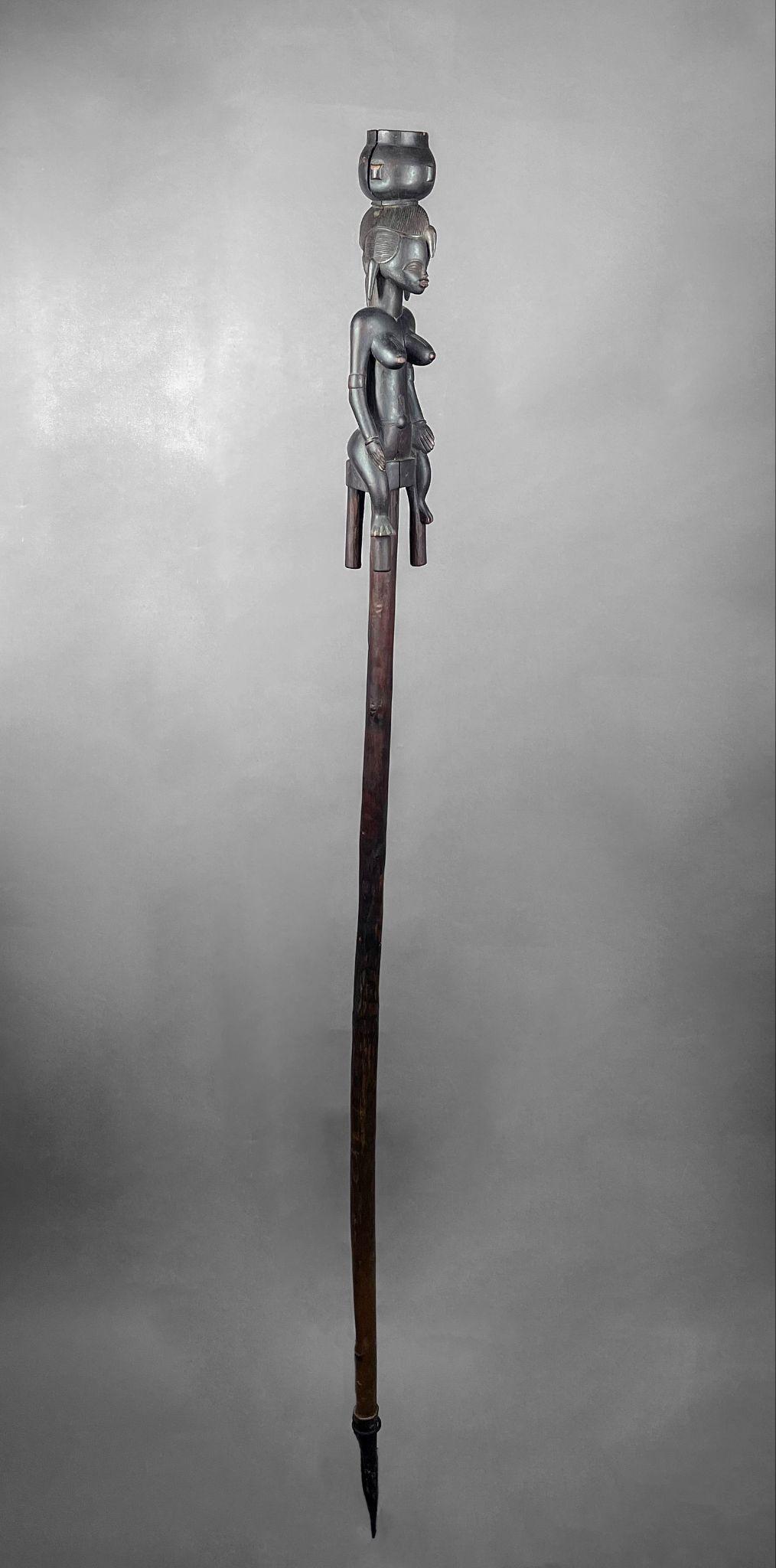
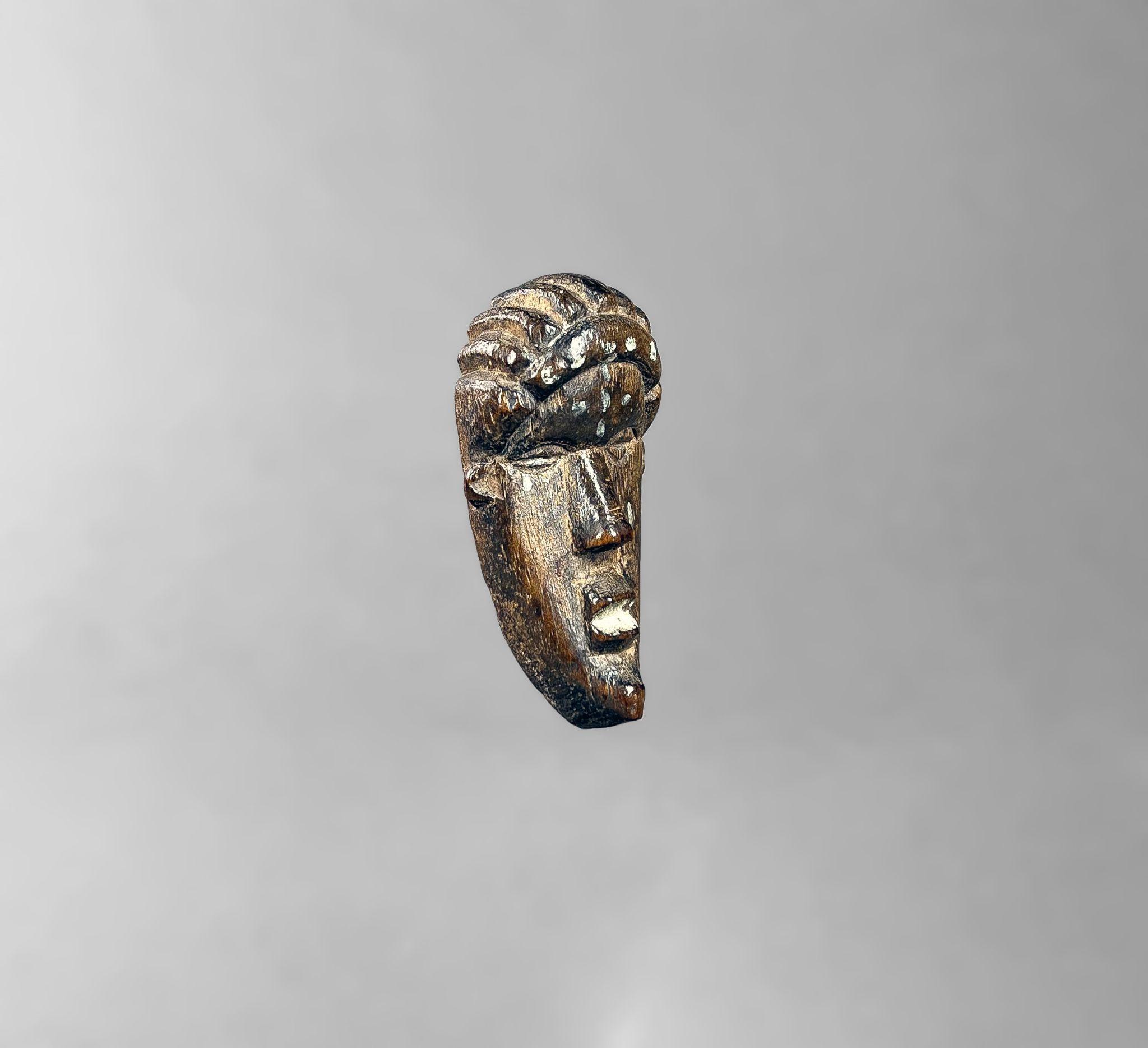
Miniature masks, often called ‘passports’, are a unique cultural hallmark among the Kru and Mande peoples of Liberia and the Côte d’Ivoire. They represent a personalized and portable forest spirit, carried by an initiated member of the clandestine, all-male ‘Poro’ society. This example is particularly fine due to its small size and well-defined details for the scale. Her lips are pursed, eyes asleep, and coiffure braided into rows in classic ‘Gela’ form, heightened by the dots of kaolin pigments to signify the body paint worn by ritualists.

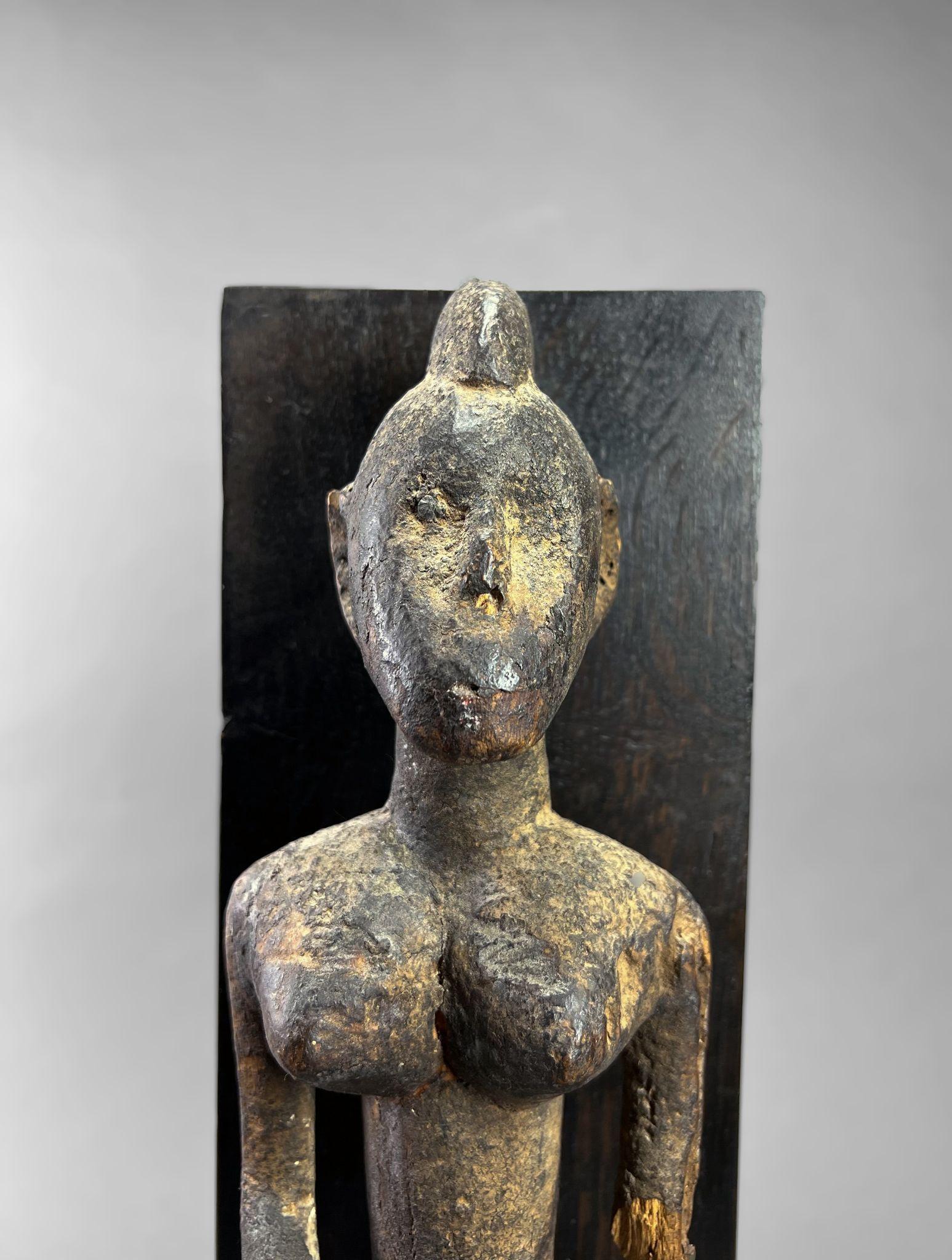
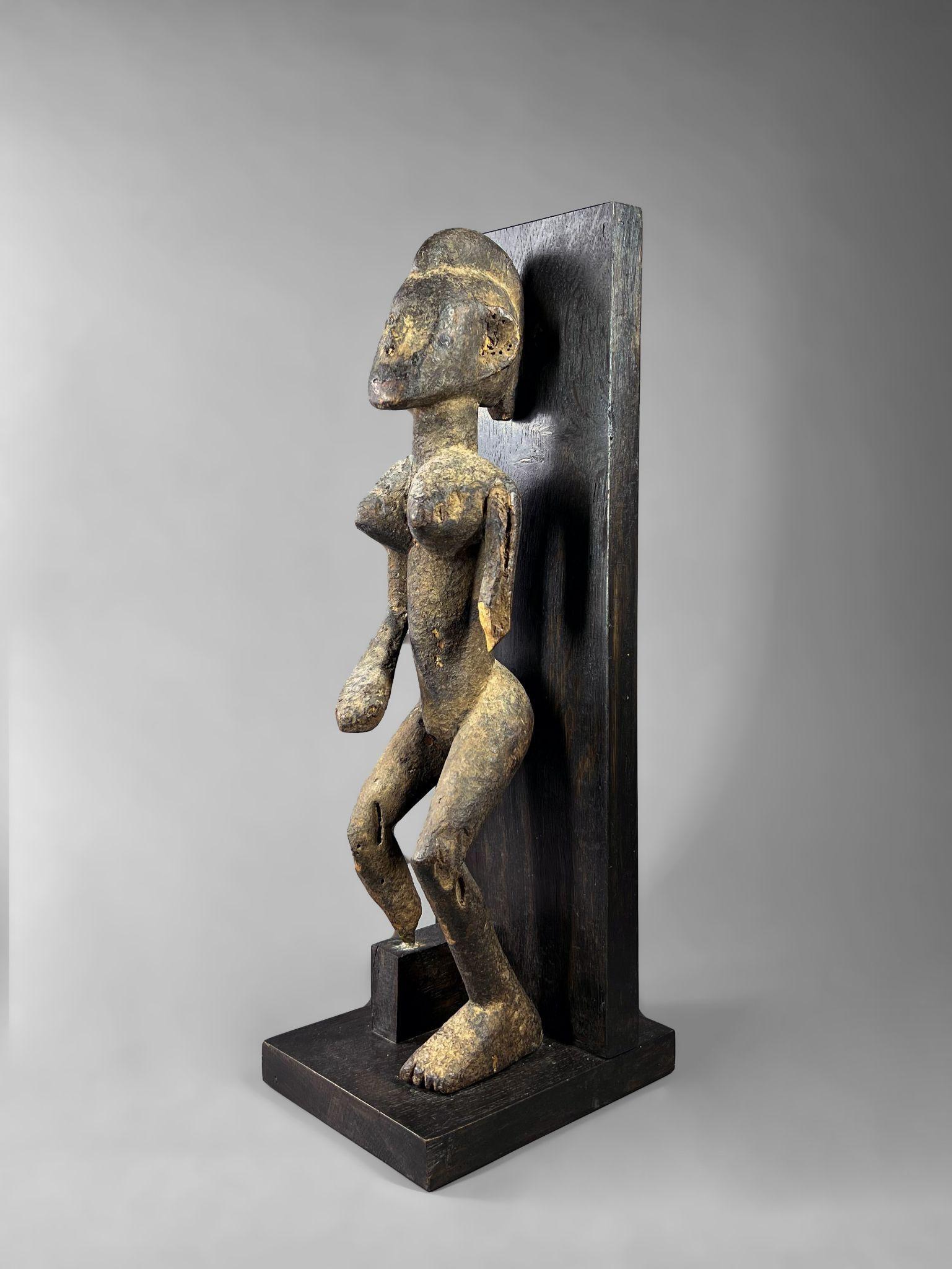
The deserts of Burkina Faso and Mali are some of the only environments in all of sub-Saharan Africa which harbor the right conditions for long-term preservation of wood carvings. The present figure is a good testament to the climate’s ability to preserve. This ancient sculpture depicts the primordial female ancestor or spirit, beautifully confident in both posture and reserved expression. The surface - consisting of layers of crust and palm oil libations - shows that the sculpture had great significance and was used over a very long period of time. With time, the figure also lost the right leg and left arm, but the presence and power still remains. Even though the old base is odd, I will leave it on, so buyer can decide whether to keep or remove.
A comparable example sold at Bonham’s, 27 April 2022



The Asmat people of West Papua were not largely contacted until the 1950’s, but quickly became famous for their material culture, thanks largely to Michael Rockefeller and his fieldwork in the area. Consisting of beadwork, fiberwork, decorated skulls, and most notably their complex and unique wood carvings. Asmat statuary is made to venerate and guide the dead, as without assistance the dead cannot cross over to the ‘other side’. This example is particularly fine due to the slender carving, height, and elaborate tattoos adorning the body. The nose and ears are pierced and the head is covered in a thin layer of black wax. The present example is also notable for the fully suspended arms held at the sides, which is rare to see.
Another Asmat with suspended arms held at the sides, sold at Dorotheum, 8 July 2019
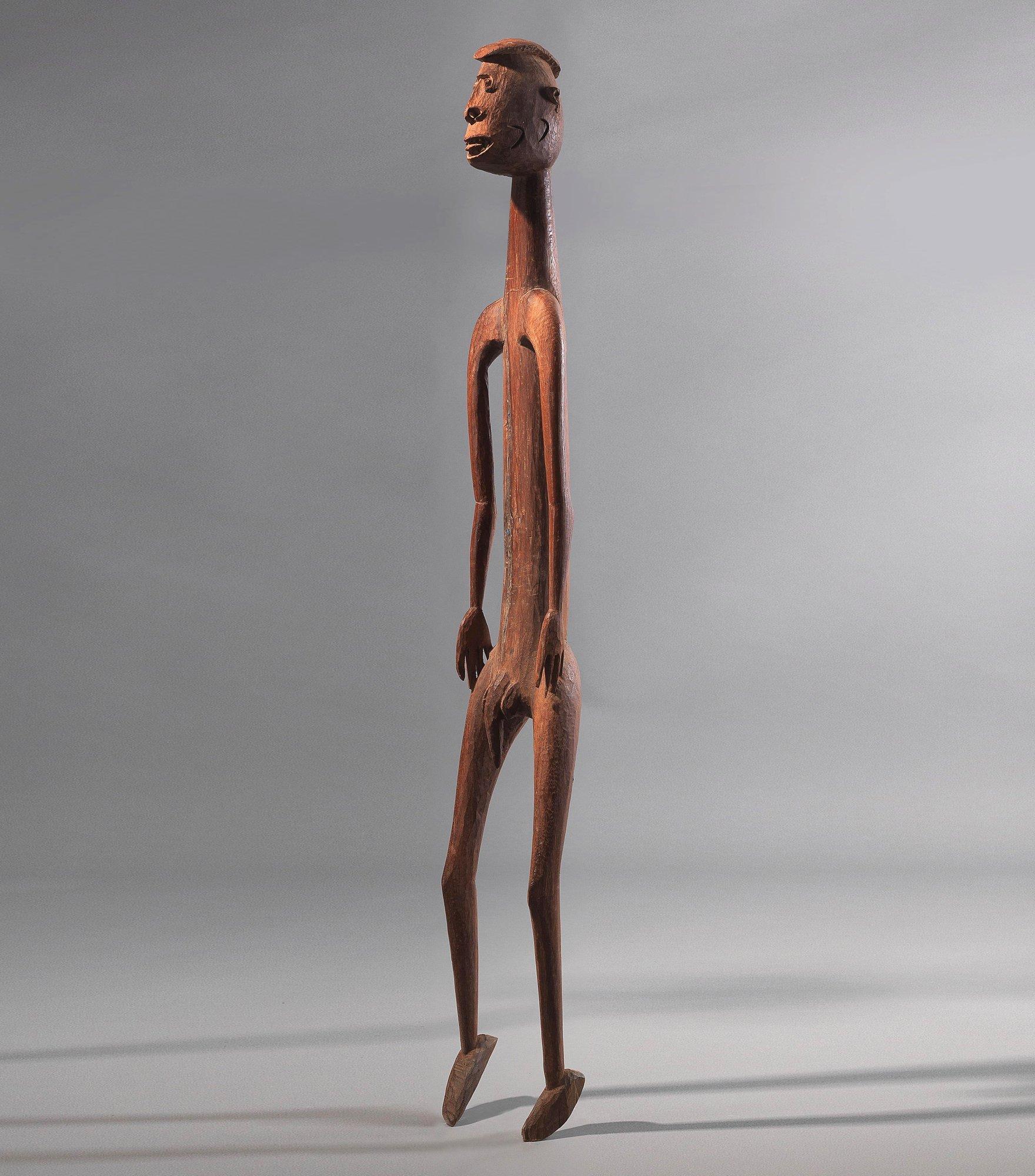


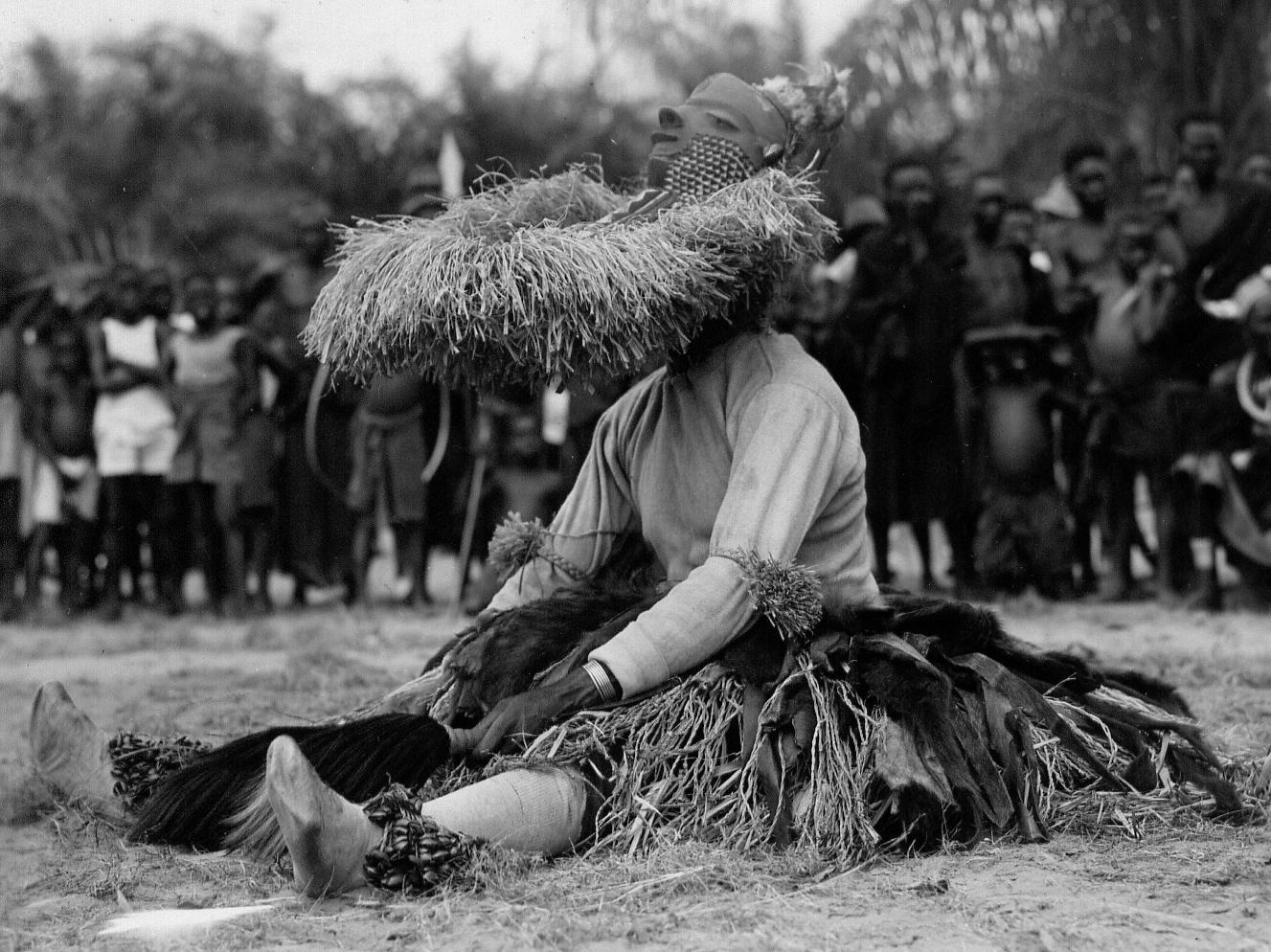

76 cm tall
Provenance: Features an unknown museum number on reverse
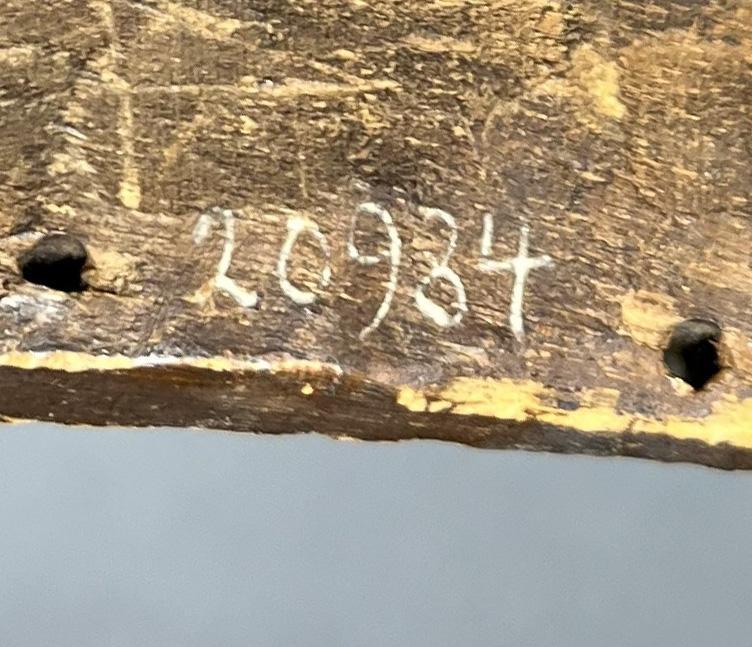
Here is a fine and old Pende mask in the ‘Kiwoyo’ form, with the long protruding portion representing a long beard. The elaborate mask is carved in one unbroken wood block, and polychromed with natural pigments.

The lack of holes in the face indicates that the mask would have been worn atop the head, with the beard sitting horizontally and the face gazing up at the sky.
There is a small and unidentified number on the back.
